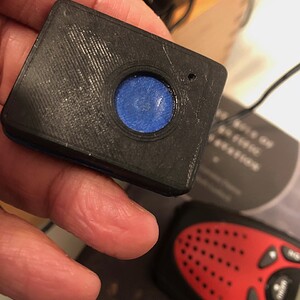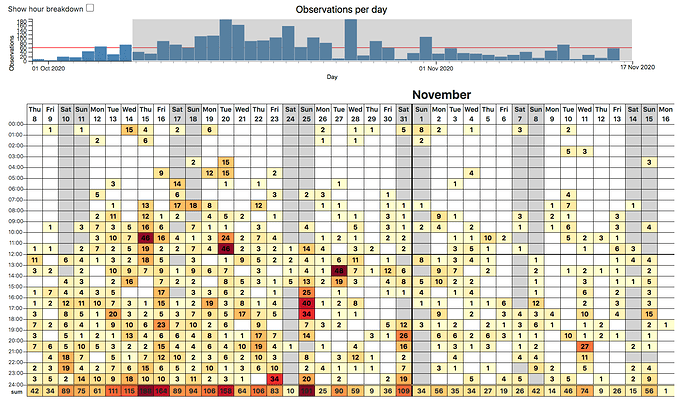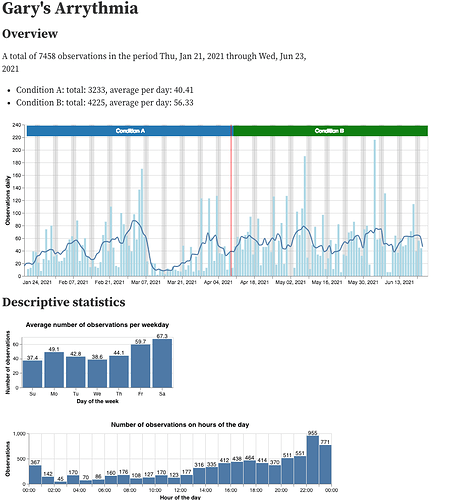This is a dedicated topic for discussion of the One Button Tracker, a tool that has come up in a number of discussions.
Background
The One Button Tracker is a maximally simple self-tracking tool that has been the subject of ongoing research by Thomas Blomseth Christiansen and Jakob Eg Larsen for many years, with me as a frequent kibitzer, supporter, and guinea pig. You can see a great short presentation of the idea here:
Let’s Make Active Self-Tracking Much Easier With A One Touch Device
Prototypes
You’ll notice in the linked video that Thomas is using a programable smartwatch as the OBT device. Since then (2015) there have been a number of advances. Thomas and Jakob have created two prototype versions, one using an Arduino board, the other using a CPB. Here are images of a couple of the prototypes:
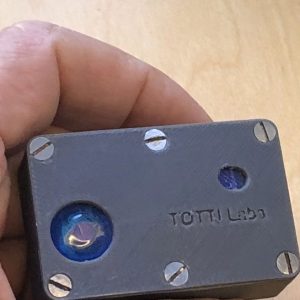
One Button Data
I’ve collected nearly 10,000 observations for my arrhythmia project using these prototypes, and they’ve been used in a series of academic and clinical studies.
Fortunately the process of recording observations and viewing the data is simple. When you plug the device into a computer using a USB cable, it opens as a drive. On the drive is a file: data.csv. And there’s your data, in a form that allows you to work with it using any spreadsheet tool. The table looks like this:
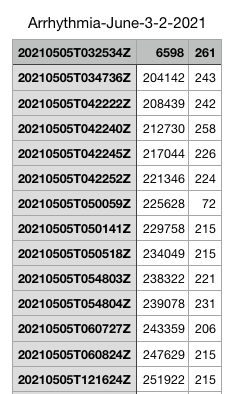
The first column is the time, the second two columns I ignore, but they represent the force and duration of the button press.
Visualization
Since One Button data is tabular data accessible in .csv files, any visualization tool can handle it.
I use a simple visualization scheme created by Thomas and Jakob for my initial review, and then work with the data to answer more questions.
Sometimes the three of us work together in an Observable Notebook that Thomas wrote.
What OBT Can Observe
I've used the tracker to record various kinds of observations, including emotions, cravings, and food. Others have tracked different things altogether. The instrument is flexible, in that all the work of specifying and then noticing the phenomenon is done actively, by my own brain, and the button press itself just records the time. It's easy to imagine other possible uses.How to Get One
Unfortunately the One Button Tracker is research instrumentation. Each one is hand-assembled by Thomas and Jakob, including 3-D printing the case, so these trackers are in short supply.
Fortunately, @gedankenstuecke figured out how to program a commercially available and not very expensive (£20) puck.js. Bastian describes his tracker in this forum thread:
Cheap & open source one-button tracker
@esenabre used the puck.js and Bastian’s code to apply the One Button approach to track whenever he thought about his smart phone. He describes his project here:
Self-research on smartphone use / withdrawal.
Whenever the One Button shows up in a self-tracking project, it always sparks comment and interest, and of course questions. These are typically a digression from the topic where it arises - but an interesting one. So I created this topic specifically for discussion of all things One Button.
